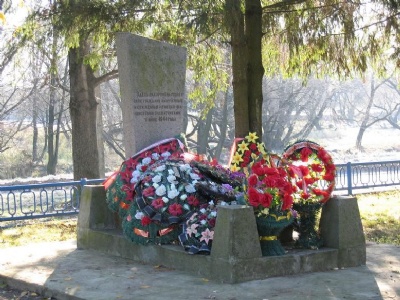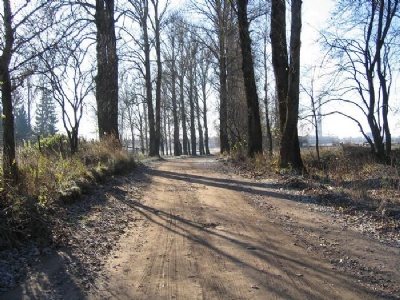Maly Trostenets
About twelve kilometers east of Minsk was a small village called Maly Trostenets. There, shortly after the German attack on the Soviet Union in June 1941, the germans established a camp for Soviet prisoners of war. But barely a year later, in May 1942, the camp became a place where the Nazis started to murder Jews by shooting. The Jews murdered came from the ghetto in Minsk and nearby ghettos. A small number of gas wagons were also used to kill the Jews, but majority were shot. In a sense, the camp became a extermination camp where Jews were brought to be murdered. A number of barracks were also set up for prisoners forced to work with the killing process. Next to the camp was a railway which facilitated the transports of Jews from different parts of Belarus to Trostenets. There were two execution sites in Trostenets, the largest one was in the forest of Blagovshchina and the smaller one was in another forest area called Shashkovka. In the autumn of 1943, the Nazis began to open the mass graves and cremate the corpses (Aktion 1005) in an attempt to conceal the crimes. In Trostenets, the Nazis cremated the corpses using large outdoor ”grills” consisting of railroad rails. The camp was liquidated by the Nazis in late July 1944.
Current status: Demolished with monument (2007).
Location: 53°51'4" N, 27°42'17" E
Get there: Car.
Follow up in books: Arad, Yitzhak: Holocaust in the Soviet union (2009).



Maly Trostenets was in fact an extermination camp just as Chelmno in Poland, but has never received any official status as such. The six official extermination camps (Chelmno, Belzec, Sobibor, Treblinka, Auschwitz, and Majdanek) are too firmly institutionalized in the traditional history and it will probably never be expanded by another one. Maly Trostenets is now an integral part of Minsk. When I visited the site in the autumn of 2007 there were only monuments. But since 2015, a new and more informative memorial has been established on the site.